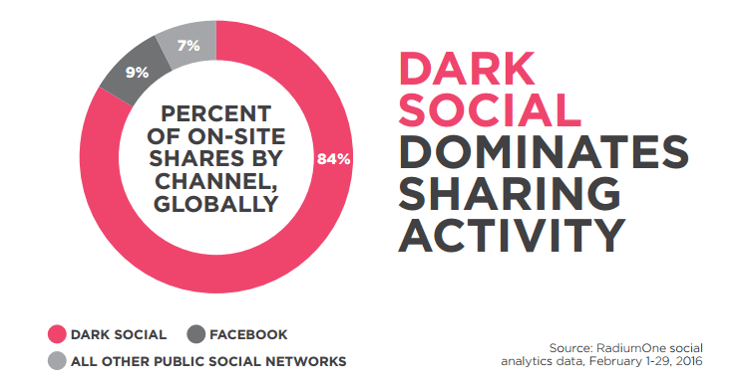At MarketReach, we believe every marketing campaign should have a metric tied to its success from the start. As marketing campaign channels have grown from print to email to web to social media, the ability to measure your campaign's success has grown, but some information is still left in the dark.
Dark social (or dark data) may seem like one of those new catchy buzzwords in the marketing industry. Although it’s wise to be skeptical about overused buzzwords, it’s important for marketing teams to acknowledge this dark data.
What is dark social?
Gartner defines
dark social as “the information assets organizations collect, process and store during regular business activities, but generally fail to use for other purposes (for example, analytics, business relationships and direct monetizing).” When gauging the success of a campaign, investigating dark social data offers supplementary value by providing a complete view of the campaign.
Example of dark social
Here's an example of dark social at work.
Bob has a quick break before his next meeting, so he hops onto his favorite blog and starts to read, “
A Brand New Perspective.” Since his girlfriend is a marketing manager, he copies the blog’s URL in the browser and pastes it into an email message. Cheers, Bob has just engaged in “dark social.”
What makes this dark social data?
The three biggest causes of dark social traffic are email, messaging apps and private or secure browsers.
Analytics tools, like Google Analytics, were built to track One-to-Many Analytics, but aren’t currently set up to capture certain activity passed within specific social channels. The action above is considered dark social because the referrer, Bob’s link from Facebook to his girlfriend in an email, is being captured as “Direct Traffic” in the analytics report. In this situation, Social Media should have been the accredited referrer.
All sources of traffic to your website are great, but the social campaign being run may not get credit as the referrer. Imagine if this user became a qualified lead but the social campaign didn’t get any credit for it.

Bring light to dark social
Below are a few ways to increase the accuracy of your analytics reports through improved attribution.
- Utilize link attribution tools. Before posting to your social outlets, utilize bitly or Google’s link shortening tools that allow you to track the correct referrer. Your average user won’t ever know the difference, and you can always pay extra to get vanity URLs in bitly.
- Get credit for your hard work. Readers commonly pull bits of content and images from blog posts and articles, and share them on their favorite channels. Make sure you are getting the credit by including a hyperlink inside your images and/or using automated link attribution when users copy content from your website.
- Investigate your direct traffic by reviewing your direct traffic report. If a URL in the report is something like https://www.mreach.com/insights/post/dont-want-your-solutions-commoditized-dont-commoditize-your-customers, it’s likely the URL was copied and pasted from another source. There’s a good chance that this link was acquired in a circumstance like Bob’s.
These simple means to boosting the accuracy of your analytics reports with improved attribution can go a long way towards ensuring your campaigns are being measured with a more complete understanding of their true impact and value.
.svg)




